Displaying Vintage Household Cleaning Tools
Posted by admin on
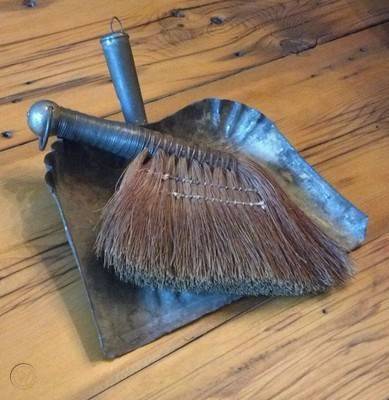
add wonderful character to your home décor.
As the first official day of summer quickly approaches, it’s the perfect time to do some “spring cleaning.” However, if you’re anything like me, you would rather do “spring decorating.” So why not combine the two —clean your home and then decorate it with some vintage household cleaning implements. Initially, you may be hesitant, but there really are some vintage cleaning tools that would add unique character to your home décor.
Household cleaning implements include devices used to remove dirt, dust, and debris on surfaces. Any vintage tool related to it could be collected and used for display. Following are some historical facts about tools and suggested ways to display them in your home.
Straw Brooms
Straw brooms, made from sorghum or “broomcorn,” were commonly used for sweeping floors and fireplace hearths during their heyday in the 1800s to mid-1900s. The flat straw brooms we’re most familiar with today were originally made with a broom press or vise. Invented during the early 19th-century by Theodore Bates of the Watervliet Shaker community, the press was used to flatten a round broom—providing a wider bristle base to cover more floor space. The flattened broom was sewn together with thick twine to permanently hold the shape and then fastened to a handle with wire. All brooms made before that time were round-shaped, usually handmade from materials like straw, hay, twigs, grass, or corn husks.
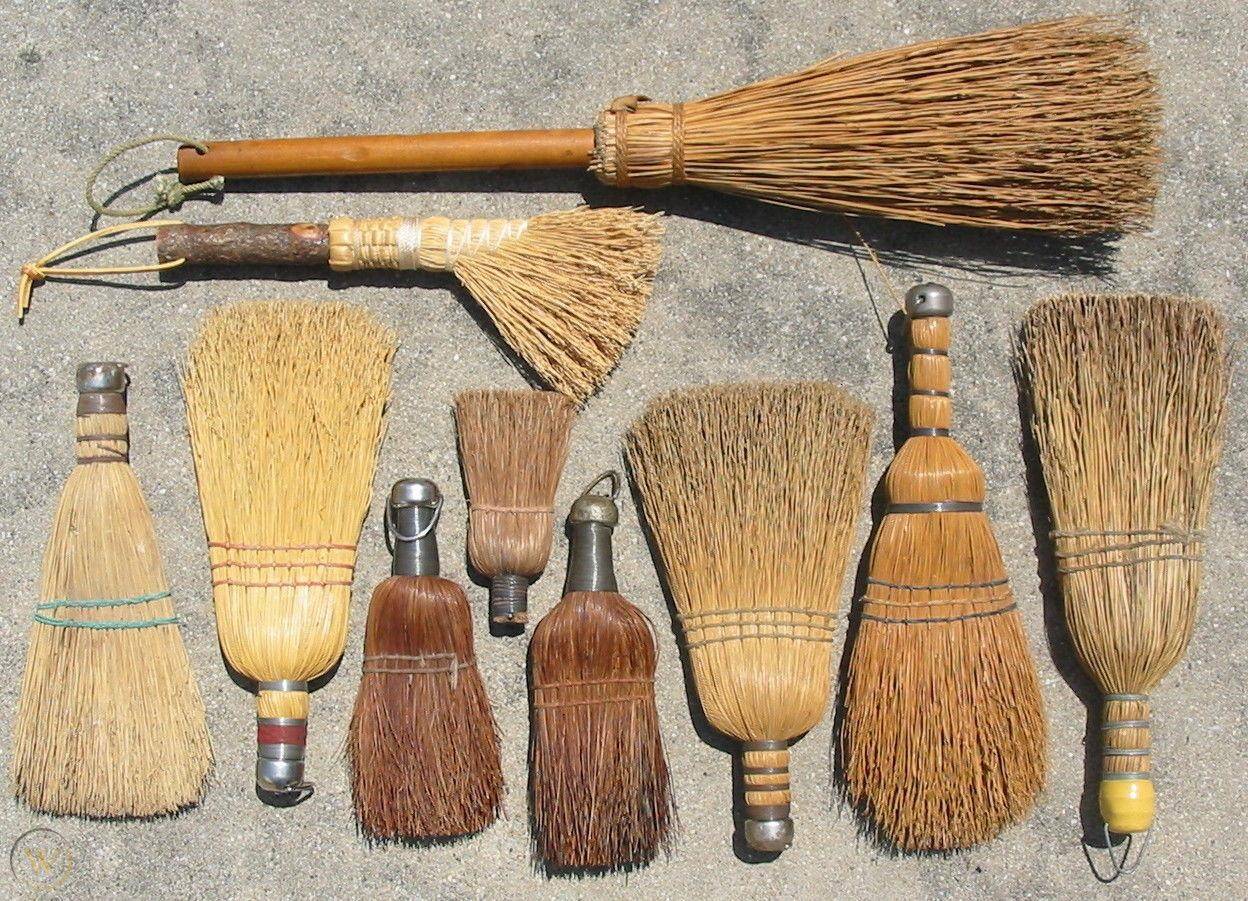
By 1810, with the invention of the foot-treadle broom machine, straw brooms began to be mass-produced in the United States, including smaller whisk brooms. By 1830, the U.S. started exporting brooms to other countries. Today, most straw brooms are imported to the U.S. from Mexico.
A fun way to display brooms is to hang them from a peg rail on your kitchen wall. You could also display a collection of whisk brooms in a large, clear vessel. In addition, you could simply lean a single broom against the corner of a wall for visual interest.
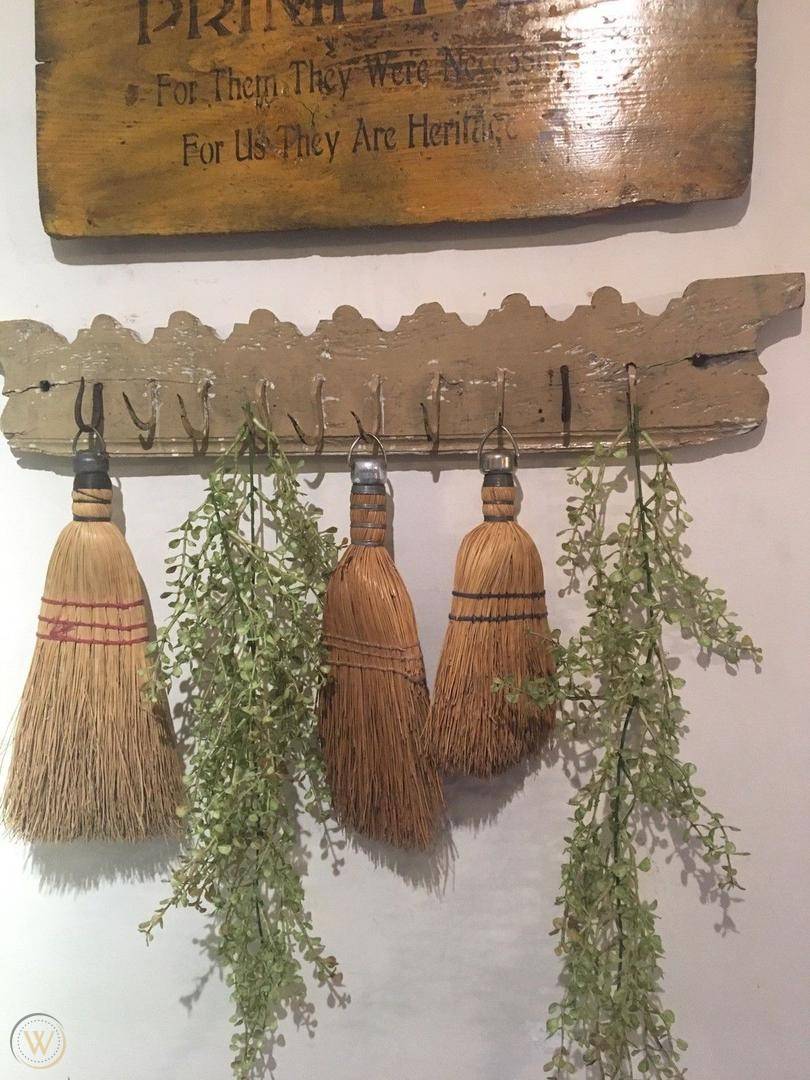
Metal Dustpans
A dustpan is commonly used along with a broom for collecting dirt, dust, or debris. The first U.S. patented dustpan was invented by Thomas E. McNeill in 1858—several decades succeeding the invention of the broom. McNeill’s metal dustpan contained a concave surface with a dirt receptacle to prevent the dirt from being swept back on the floor from the return movement of the broom.
In 1897, Lloyd P. Ray patented a dustpan with a long wooden handle and metal collection plate. The long handle and collection plate made it easier to collect dirt without bending over. This type of dustpan is most common for commercial use.
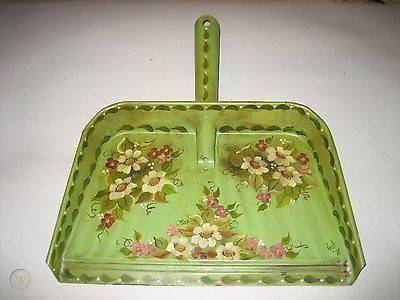
Metal dustpans look great hung on a kitchen wall since they usually include a hole in the handle for hanging them. Metal dustpans were often painted with decorative detail, so they’re worthy of being displayed as beautiful art pieces. Similar to a broom, a long-handled dustpan could be leaned against the corner of a wall to create charm.
A scrub brush or scrubbing brush is a wide brush with a long shaft and hard bristles used for cleaning floors and other surfaces. It is often used wet, with hot soapy water. Vintage scrub brush bristles could be made of hair (usually horse, oxen, squirrel, or badger), wire, synthetic fibers, or various natural materials like plant fibers. The base or handle could be made of wood, wire, metal, or plastic.
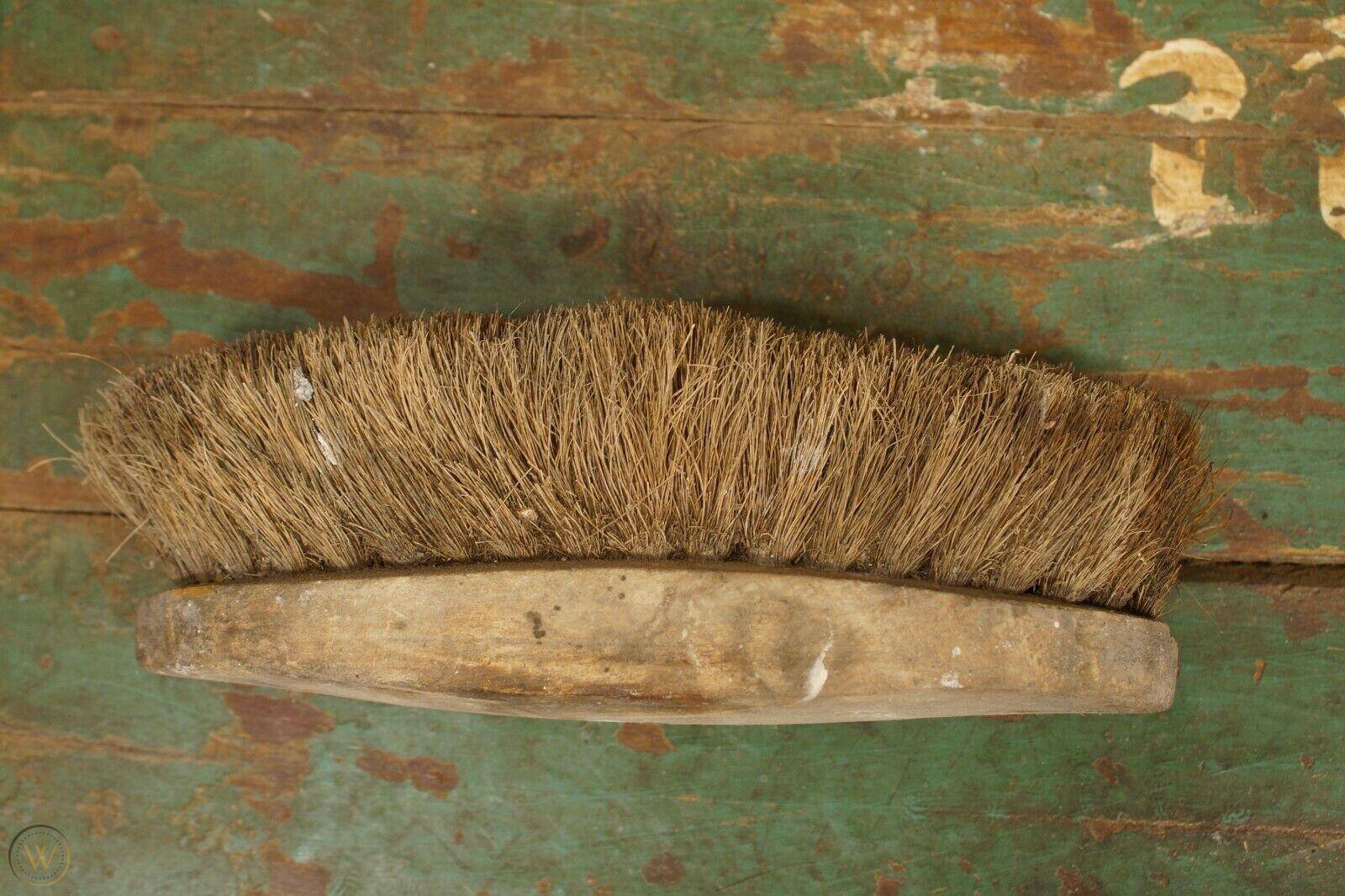
The first U.S. patent for a scrub brush was issued in 1830. From the 1800s through the 1920s, brush making was regarded as a growing trade. Brush-making factories began popping up throughout the U.S. and included the production of all types of brushes, including scrub brushes.
Vintage scrub brushes, like this one, have beautiful aged patina and look great stacked in a large bowl.
A fun way to display scrub brushes is to place a collection in a large, clear vessel or stacked in a large bowl. Scrub brushes could also be repurposed as interesting holders for photos, vintage flashcards, pens, scissors, makeup brushes, and more—simply place the item between the brush bristles, so it stands up straight.
Galvanized Mop Buckets
A galvanized mop bucket contains rollers that allow a wet mop to be wrung without getting the hands dirty. It’s usually mounted on wheels for easy mobility. In 1837, Stanislas Sorel received the first U.S. patent for a galvanized bucket. The zinc-coated steel bucket’s rustproof properties served as the perfect vessel for holding water for mopping. In 1956, Manuel Jalon Corominas invented the wheeled galvanized bucket with roller attachment for mop wringing.
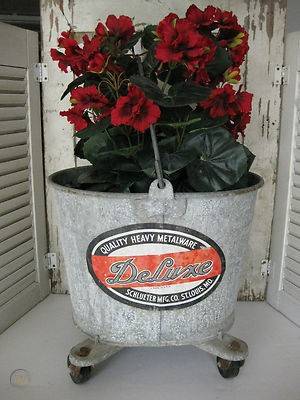
repurposed as one-of-a-kind planters.
Galvanized mop buckets could be used to hold faux or real plants. Be sure to drill holes in the bottom for drainage if filling with real flowers or plants. In addition, the bucket’s wringer could be repurposed as a quirky mounted hanger for holding towels or a wreath.
Looking Beyond Its Purpose
These utilitarian, household cleaning tools—once used for messy jobs—can liven up your décor in a fun and unique manner. Simply look beyond their intended purpose and bring them new purpose by displaying them in your home as distinctive décor to be appreciated in a fresh way.
Karen Weiss is a freelance writer and enjoys decorating her home with vintage finds from her many collections. She also has an Etsy shop called SimplePatinaFinds.
WorthPoint—Discover Your Hidden Wealth®
The post Displaying Vintage Household Cleaning Tools first appeared on WorthPoint.